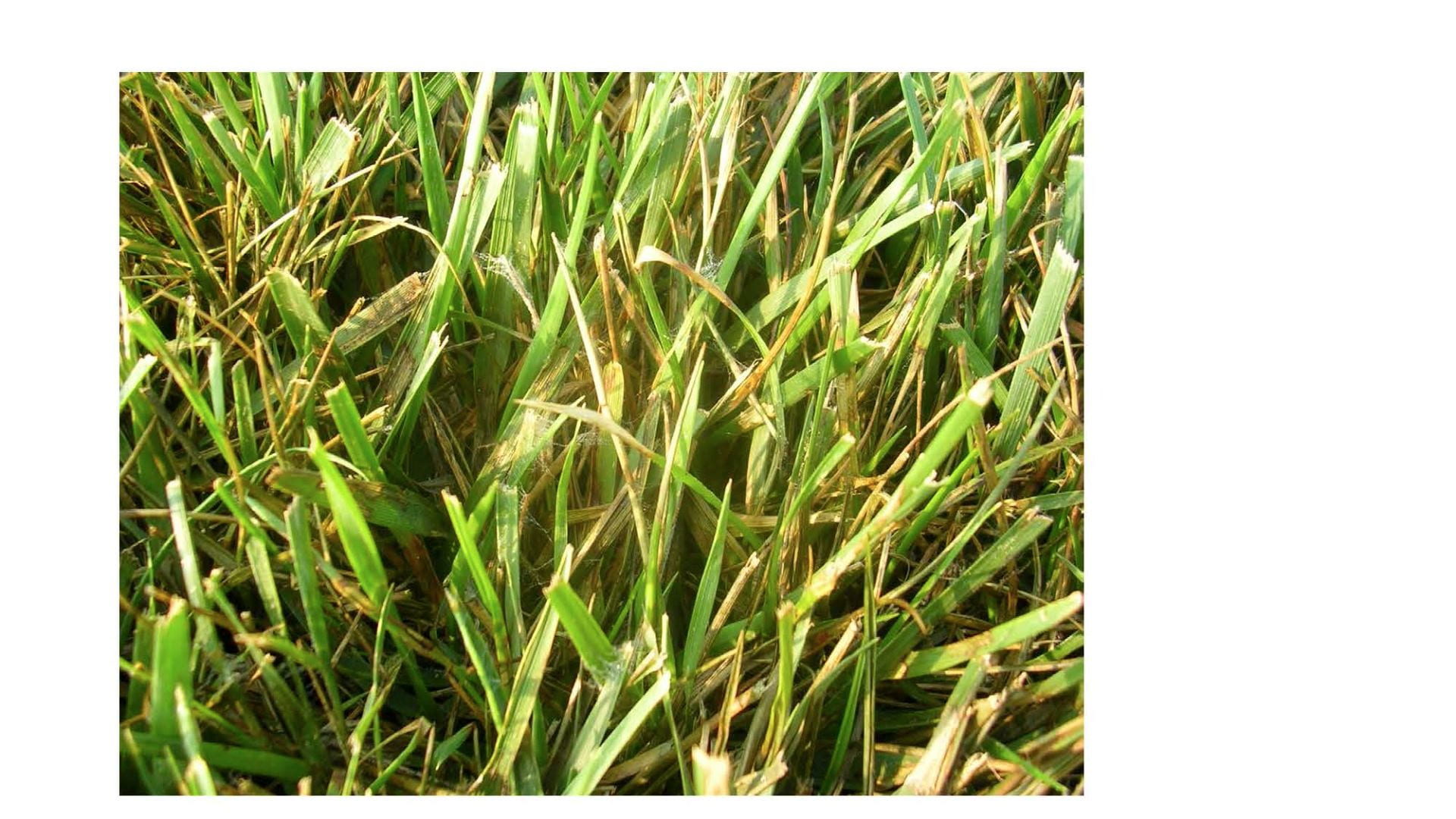Megan Kennelly, K-State Dept of Plant Pathology
Hello everyone,
Some of our mornings have had that “tropical” feeling lately! We are getting some reports of brown patch activity in tall fescue. So far it’s more from the eastern side of the state which of course does have more moisture.
Brown patch is favored by humid weather with nighttime lows around 70 degrees or above. It can occur when the nighttime lows are above 60 though.
The disease can have distinct patches OR be “diffuse/blotch” as shown in these photos:
Patchy




That is a little confusing, right? Tall fescue can also suffer from drought, grubs, general stress, etc. So – how do you tell if it is brown patch? Take a close look at the leaf blades as shown in the photos below. First, you’ll notice that tall fescue has a lot of prominent veins with a rough texture. That is ONE way to help tell it is tall fescue and not something else.
For brown patch look for a tan spot, irregular shape, with darker brown border:



Finally, if it is very moist/dewy you might see some cobwebby fungal growth – look closely here. That dries up very fast once the sun hits and the turf dries off, though.

To help prevent the disease you can make the site less favorable:
- avoid irrigating in the late afternoon/evening to prevent long periods of leaf wetness
- improve airflow
- avoid excess fertilizer
There are a lot of fungicides labeled for brown patch. Here is a great guide for commercial lawn care:
http://www2.ca.uky.edu/agcomm/pubs/ppa/ppa1/ppa1.pdf.
Brown patch is on page 12, and I will not repeat all those details here. You can click and get a ton of helpful tips right there. Keep in mind that as with most diseases preventative applications work better than after the disease has kicked in. Also – turf fungicides don’t magically turn the turf healthy again. New, green grass needs to GROW and when we hit full summer stress that is slow to happen.
Finally, if you need help with a turf diagnosis you can email me (kennelly@ksu.edu) and/or send a sample to me here at KSU via the Plant Diagnostic Clinic.
Quick tips on a good sample:

